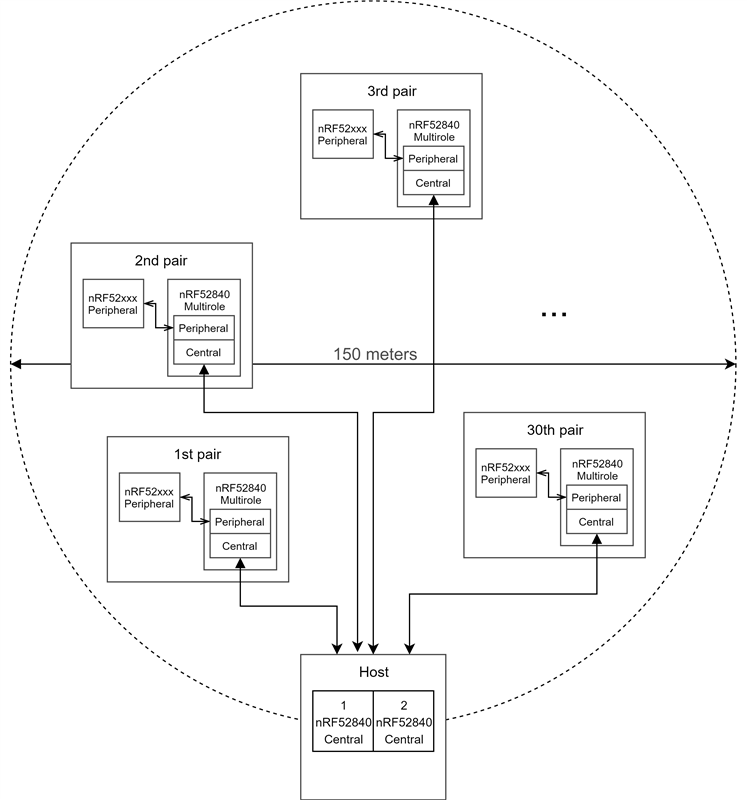Hello. I'm doing research for new project, regarding with BLE and WIFI capabilities to connect big amount of device to one host. I should choose between WIFI and BLE. I need to have a stable connection with 30 moving pairs of peripheral devices in range around 150 meters in the line of sight outdoor conditions. Devices inside each pair will be close to each other. WIFI not discussed here, so my question about BLE.
If I select BLE, I see this solution.
So, each pair will have peripheral and multirole devices. Host device will be main central. Peripheral devices will be connected to multirole (here multirole device is client). Multirole devices will be connected to main central as peripheral (here multirole device is server).
NRF52840 with Softdevice S140 is the best solution from hardware point of view for multirole and for main central. Softdevice S140 support 20 concurent connections, so I should place 2 NRF52840 to get 30 connections on host. So, how do you think is it possible to build described here system and have stable data transmition from peripheral pairs to host?
In this system will be 60 connections. BLE have 40 channel (and 3 for advertising). Is it possible to have a more than one connections on one channel for close working devices?
To ease of understanding I drew this on attached figure. Hope this help to understand what I mean.

Also if you have any other ideas and suggestions to development of described system I will gladly get to know them
Thanks in advance.


